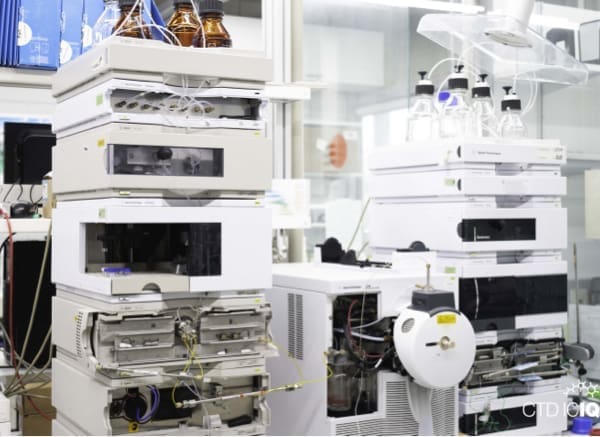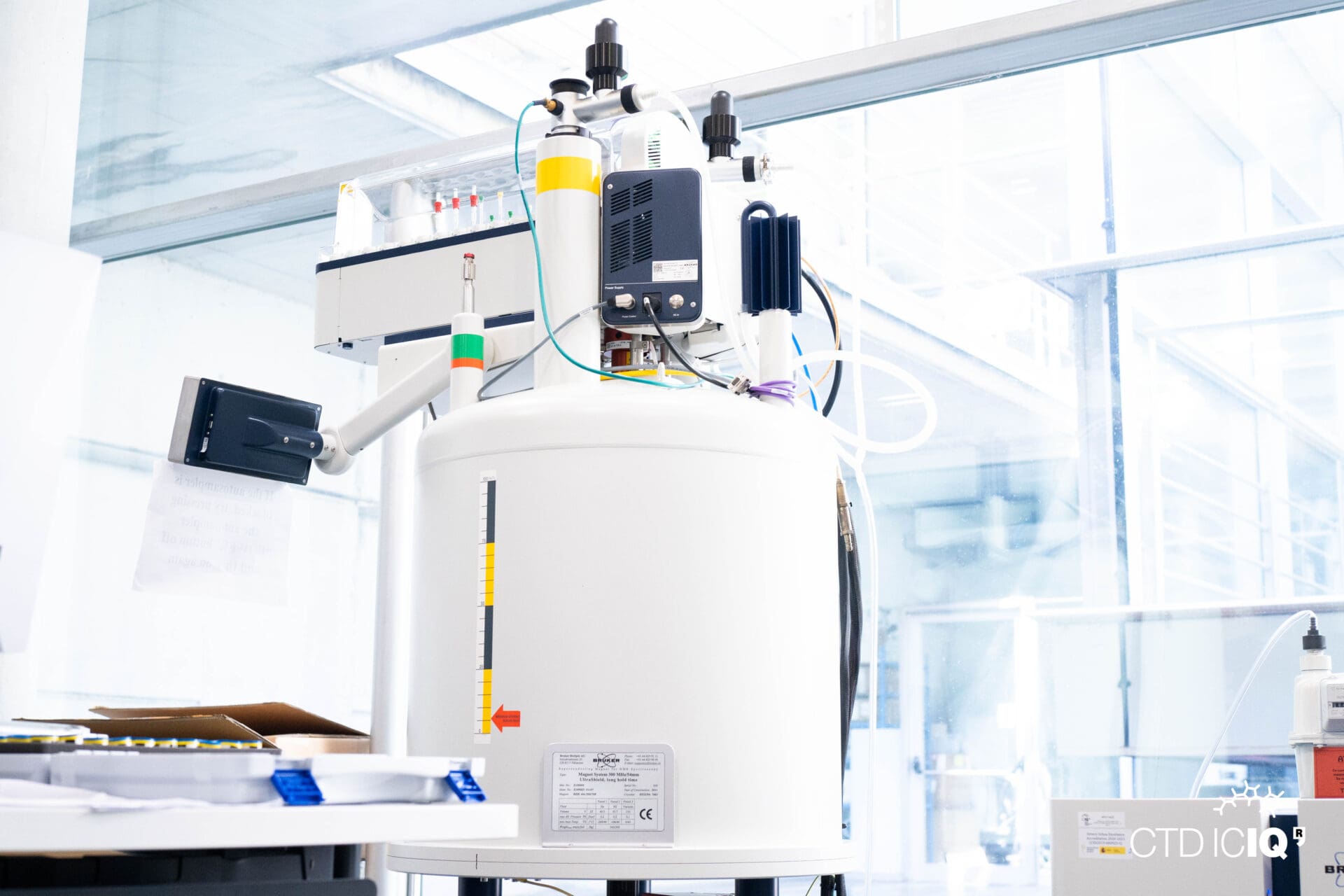Spectroscopy and Material Characterisation
This unit gives scientific support to the institute’s research groups in spectroscopic techniques and methods related to the testing and characterization of solid materials, regarding their structure and chemical reactivity
About
The Spectroscopy and Material Characterisation Unit gives scientific support to the institute’s research groups in spectroscopic techniques (UV-Vis, FTIR, FT-Raman, Circular Dichroism and Fluorescence spectra as well as polarimetric measurements) and methods related to the testing and characterisation of solid materials (textural properties, paramagnetism, DLS, pycnometry, viscosity, gases online analysis), regarding their structure and chemical reactivity.
Moreover, the Unit trains the users in order to achieve optimal use of the instruments.
Equipment
-
Fluorescence microwell plate reader

Microplate reader FLUOstar Omega. System composed by a xenon flash-lamp, wheels with 8 excitation and 8 emission filters, temperature control from ambient +5ºC to 45ºC, a reagent injector and a PMT detector. The instrument allows fluorescence and absorbance intensity measurements in the UV/Vis in microplates up to 1536-wells. Wavelength range for fluorescence: 240-740 nm. Wavelength range for absorbance: 220-850 nm.
-
UV-Vis-NIR spectrophotometer

UV-Vis-NIR spectrophotometer Lambda 1050 from Perkin Elmer. This high performance instrument has double beam optics, double monocromator and three detectors system (PMT, InGaAs and PbS) covering 175 to 3300 nm range.
-
UV-Vis Spectrophotometer III

Double beam UV-Vis Shimadzu spectrophotometer model UV-1800. Spectral range from 190 to 1100 nm, 1 nm fixed slit.
-
UV-Vis Spectrophotometer II

Double beam UV-Vis Agilent Technologies spectrophotometer model Cary 60 UV-Vis. Spectral range from 190 to 1100nm, 1.5nm fixed slit and room light immunity.
-
UV-Vis spectrophotometer I

Double beam UV-Vis Shimadzu spectrophotometer model UV-2401PC with a Peltier thermostated (7-60 ºC) sample holder. Optical range from 190 to 1100 nm, variable slit.
-
Time Correlated Single Photon Counting (TCSPC) Spectrometer

LifeSpec II from Edinburgh Instruments. This is a compact, high performance, computer controlled spectrometer for the rapid measurement of fluorescence lifetimes based on the technique of Time Correlated Single Photon Counting. The LifeSpec II has two detectors, one standard PMT in the UV-vis range and another PMT nitrogen cooled with spectral response in the vis-NIR region from 300 to 1700nm.
-
Fluorescence spectrometer

Fluorescence spectrometer OmniFluo900 Series from Zolix equipped with a PMT detector and continuum Xe light source.
-
Spectrofluorimeter II
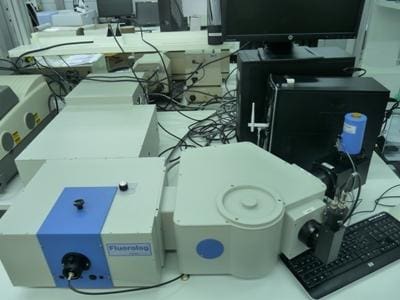
Spectrofluorimeter Horiba Jobin Yvon. System composed by a continuum 450W Xenon lamp, double monochromator for excitation, a solid sample holder, detection in Right Angle or Front Face mode and absorbance measurements. The instrument allows fluorescence measurements in the wavelengths range of the UV/Vis and NIR from 250 to 1600 nm.
-
Portable Raman Spectrometer 785nm

Dispersive Raman Spectrometer model i-Raman from BWTEK. This instrument has an excitation laser at 785nm and a fiber optic probe with a TE Cooled Linear Array detector. The resolution is 3cm-1 and the spectral range goes from 75 to 3200cm-1.
-
Portable Raman Spectrometer 532nm

Dispersive Raman Spectrometer model i-Raman from BWTEK. This instrument has an excitation laser at 532nm and a fiber optic probe with a TE Cooled Linear Array detector. The resolution is 3cm-1 and the spectral range goes from 75 to 4000cm-1.
-
Polarimeter

Polarimeter Jasco model P-1030 with simmetrical angular oscilation for the Sodium line and photomultiplier tube detector. Angular range: ± 90 º, speed better than 6 º s-1.
-
FTIR spectrometer I

FTIR spectrometer Nicolet is50 from Thermo Scientific, with DLaTGS and MCT detectors, and FTRaman module with the capability of Raman mapping and well plates screening. The instrument also includes a built in ATR module with diamond crystal that allows measuring samples in the Far Infrared (up to 150 cm-1) and Middle Infra-red regions (4000-400cm-1). Spectral range in main sample compartment: 4000–400 cm-1.
-
FTIR Spectrometer II
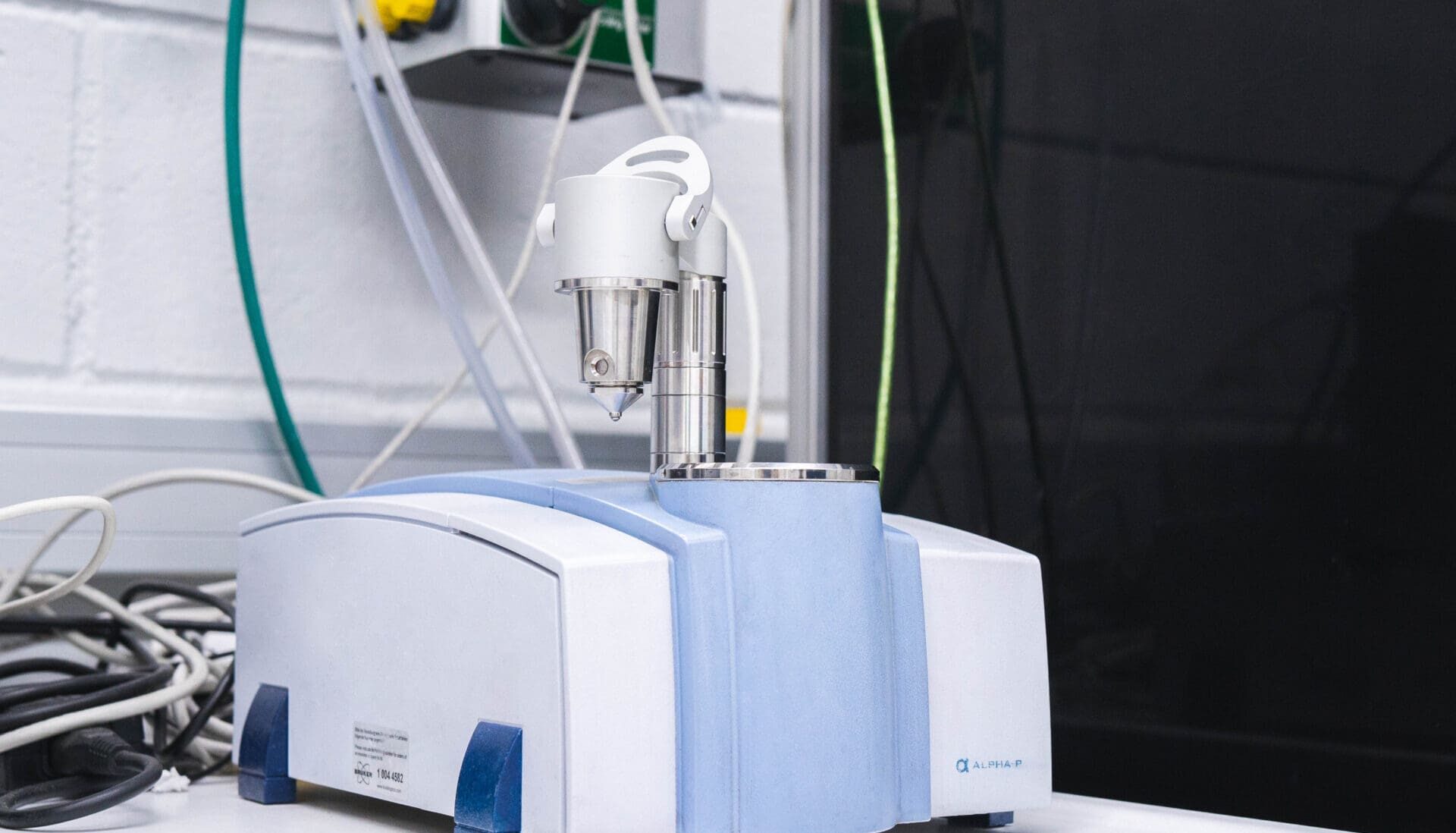
FTIR Bruker spectrometer model Alpha with an ATR accessory. Spectral range from 4000 to 400 cm-1.
-
FTIR Spectometer III

FTIR React IR 15 from Mettler Toledo. The instrument allows in situ reaction monitoring in the mid-infrared. Spectral range: 3000 to 650 cm-1.
-
FTIR spectrometer IV

FTIR spectrometer Cary 630 from Agilent technologies equipped a DLaTGs detector (4 cm-1 resolution) and a single bounce diamond ATR accessory (spectral range 650-4000cm-1). There is also a DialPath accessory for measuring liquid samples in transmission mode with selectable 30, 50 and 100 μm pathlength.
-
Quantachrome Autosorb iQ gas adsorption analyser

Porous structure of solids by gas physisorption (BET area, pore volume and pore size distribution) typically by nitrogen. Argon also available.
-
Pfeiffer Omnistar mass spectrometer

Online analysis of gases. Up to 100 AMU. Analysis of gas streams and atmospheres. Support of other apparatus (i.e., setups of the researchers).
-
Quantachrome micro Ultrapyc 1200e

Allows measuring the true or skeletal density of solids (without considering the volume occupied by pores) by gas displacement, normally helium. Precision increases with the amount of sample (ideally 0.5-2 cm3).
-
ZEN3600 NanoZS
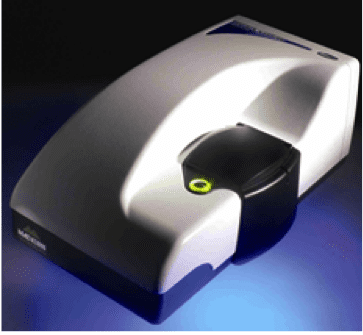
Malvern Light scattering (DLS) analyzer for nanoparticles and macromolecules in suspension. Hydrodynamic diameter by DLS (0.6 to 6000 nm). Zeta potential of particles between 5 and 10000 nm by DLS.
-
Anton Paar Rheometer MCR302

Allows determining the absolute viscosity and the flow behavior under different conditions of speed or shear stress and temperature.
-
Brookfield Viscometer DV-II+pro

Fluid viscosity at given shear rates.
-
Bruker EMX X-band Micro EPR

EMX Micro spectrometer with an X-band bridge of 9.1 – 9.9 GHz. Allows acquiring spectra of both solution and powder samples for studying metal complexes or organic radicals at ambient conditions (298 K) or low temperature like 4 K (He) or 77 K (N2), in perpendicular or parallel mode. Additionally, paramagnetic compounds can be generated in situ via UV-Vis irradiation (Hg lamp 200 – 2000 nm) or external devices (LEDs).
Other research units

Let's create a brighter future
Join our team to work with renowned researchers, tackle groundbreaking
projects and contribute to meaningful scientific advancements




